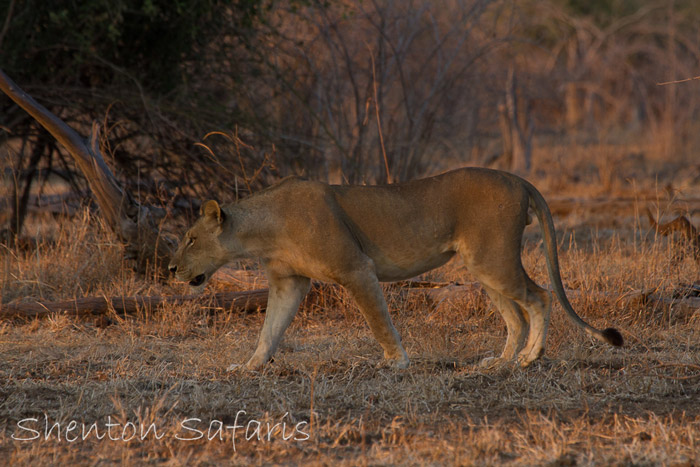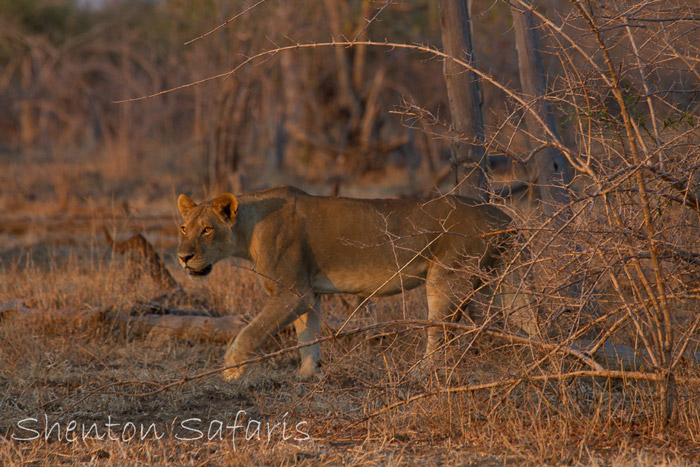I had to shout several time to put again the lamp near by
Mammals: Interesting or Unusual Behaviour
- nan
- Posts: 26474
- Joined: Thu May 31, 2012 9:41 pm
- Country: Switzerland
- Location: Central Europe
- Contact:
Re: Interesting or Unusual Behaviour
I don't know... the "lamp" was too  to follow an action
to follow an action 
I had to shout several time to put again the lamp near by
I had to shout several time to put again the lamp near by
Kgalagadi lover… for ever
https://safrounet.piwigo.com/
https://safrounet.piwigo.com/
- Richprins
- Committee Member
- Posts: 75288
- Joined: Sat May 19, 2012 3:52 pm
- Location: NELSPRUIT
- Contact:
Re: Interesting or Unusual Behaviour
It looks like quite a "stiff" carcass, and squirrels should be asleep at night?
Ground squirrel can be dug up though?
Dr Mills is scarce, but can try...my only remaining KTP contact...
Ground squirrel can be dug up though?
Dr Mills is scarce, but can try...my only remaining KTP contact...
Please check Needs Attention pre-booking: https://africawild-forum.com/viewtopic.php?f=322&t=596
Re: Interesting or Unusual Behaviour
I don't think that a BEF can dig out a squirrel from the burrow, they escape quickly 
Very strange this
Very strange this
- Flutterby
- Posts: 44029
- Joined: Sat May 19, 2012 12:28 pm
- Country: South Africa
- Location: Gauteng, South Africa
- Contact:
Re: Interesting or Unusual Behaviour
The maneless male lion of South Luangwa
Posted on 8 May, 2015 by Shenton Safaris
We have enjoyed numerous sightings of a young maneless lion here at Shenton Safaris and believe it or not, he is approximately 30 months old. He is part of the Mwamba Kaingo pride and has two brothers from the same litter; but unlike him, both of them are already showing the characteristic ruff of hair that is usually the diagnostic feature of a male lion.

We only became aware that he is a ‘mane-less male’, once we observed him in the sole company of his brothers, during our 2014 season. They were discovered separated from the pride and it was easier to differentiate them, and most especially him, from the females. After reaching puberty (20 to 24 months), young male lions are often forcibly evicted from the pride by their mother and aunts or they are expelled by the territorial male(s).
At approximately 12 months of age, male lions will usually start to develop their manes. A few tufts of scraggly looking hair sprout behind the ears and around the neck as the beginnings of one of the most well-known signs of sexual dimorphism in nature. However, in some parts of Africa, less-hirsute male lions are fairly common. In the Selous Game Reserve of Tanzania for example, mane-less lions are fairly common and are often the dominant males in their area.

What is strange under these circumstances is the fact that his father and uncle, as well as other known offspring of theirs, all possess resplendent ‘crowns’. Unfortunately, this lack of a mane could make it very difficult for this lion to establish himself as a dominant male within any future coalition and he is also very unlikely to attract the attention of females in oestrus – historically, most lionesses in this area prefer their males to be of the more hirsute variety. But all is not lost, as together with his brothers and the strong genes that they inherited from their parents, they will form a strong brotherhood, which should prove the match of any rival males contesting for territory and females.
Posted on 8 May, 2015 by Shenton Safaris
We have enjoyed numerous sightings of a young maneless lion here at Shenton Safaris and believe it or not, he is approximately 30 months old. He is part of the Mwamba Kaingo pride and has two brothers from the same litter; but unlike him, both of them are already showing the characteristic ruff of hair that is usually the diagnostic feature of a male lion.

We only became aware that he is a ‘mane-less male’, once we observed him in the sole company of his brothers, during our 2014 season. They were discovered separated from the pride and it was easier to differentiate them, and most especially him, from the females. After reaching puberty (20 to 24 months), young male lions are often forcibly evicted from the pride by their mother and aunts or they are expelled by the territorial male(s).
At approximately 12 months of age, male lions will usually start to develop their manes. A few tufts of scraggly looking hair sprout behind the ears and around the neck as the beginnings of one of the most well-known signs of sexual dimorphism in nature. However, in some parts of Africa, less-hirsute male lions are fairly common. In the Selous Game Reserve of Tanzania for example, mane-less lions are fairly common and are often the dominant males in their area.

What is strange under these circumstances is the fact that his father and uncle, as well as other known offspring of theirs, all possess resplendent ‘crowns’. Unfortunately, this lack of a mane could make it very difficult for this lion to establish himself as a dominant male within any future coalition and he is also very unlikely to attract the attention of females in oestrus – historically, most lionesses in this area prefer their males to be of the more hirsute variety. But all is not lost, as together with his brothers and the strong genes that they inherited from their parents, they will form a strong brotherhood, which should prove the match of any rival males contesting for territory and females.
- Lisbeth
- Site Admin
- Posts: 65822
- Joined: Sat May 19, 2012 12:31 pm
- Country: Switzerland
- Location: Lugano
- Contact:
Re: Interesting or Unusual Behaviour
There was also an article somewhere (African Geografic?  ) about a female lion with a mane and more than one
) about a female lion with a mane and more than one 
"Education is the most powerful weapon which you can use to change the world." Nelson Mandela
The desire for equality must never exceed the demands of knowledge
The desire for equality must never exceed the demands of knowledge
- nan
- Posts: 26474
- Joined: Thu May 31, 2012 9:41 pm
- Country: Switzerland
- Location: Central Europe
- Contact:
Re: Interesting or Unusual Behaviour
trans-genus 
Kgalagadi lover… for ever
https://safrounet.piwigo.com/
https://safrounet.piwigo.com/
Re: Interesting or Unusual Behaviour
nan wrote:trans-genus
No Nan, just bald.
Tsavo Lions have lots of maneless males. There was a study made, but no one got to the reasons for it. Possibly a genetic throwback to maneless ancestors?
Dewi
What is the good of having a nice house without a decent planet to put it on? (H D Thoreau)
What is the good of having a nice house without a decent planet to put it on? (H D Thoreau)
Re: Interesting or Unusual Behaviour
Knysna elephant Oupoot overturned a Bell logger at Goudveld Forest plantation
http://www.pressreader.com/south-africa ... 9/TextView
http://www.pressreader.com/south-africa ... 9/TextView
- nan
- Posts: 26474
- Joined: Thu May 31, 2012 9:41 pm
- Country: Switzerland
- Location: Central Europe
- Contact:
Re: Interesting or Unusual Behaviour
oups... yellow concurrent 
Kgalagadi lover… for ever
https://safrounet.piwigo.com/
https://safrounet.piwigo.com/


